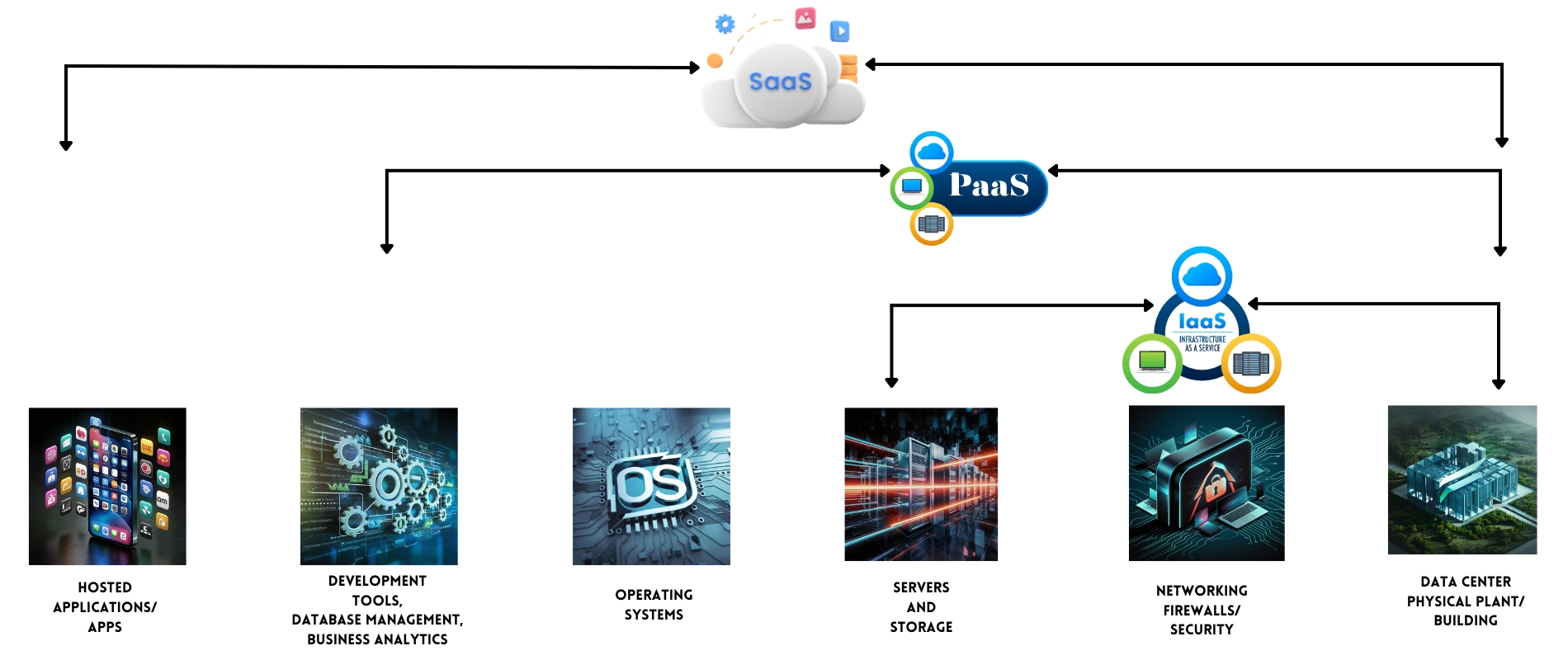
cloud:
The term “Cloud” in the tech world refers to a network of servers, storage, databases, and other computing resources that are located in data centers all over the world. You can’t physically touch the cloud, but you can access it through the internet.
cloud services:
Cloud services are essentially resources delivered on-demand over the internet. These resources can be anything from software applications to data storage to even powerful computing capabilities, imagine a vast network of super-powered computers in warehouses all over the world. Cloud services are like renting space and power from these warehouses to store your data, run software, or access powerful computing resources. The key idea behind cloud services is that you don’t need to own or maintain the physical infrastructure behind these resources. Instead, you access them via the internet from a cloud service provider like Google Cloud (GCP), Amazon Web Services (AWS) or Microsoft Azure.
data centers:
Companies like Google, Amazon, and Microsoft build and maintain massive data centers packed with servers and storage. These centers are designed for reliability and security.
The internet: You access cloud services through the internet, from anywhere with an internet connection.cloud providers:
These companies offer various cloud services, which can be broadly categorized into three main types
Infrastructure as a Service (IaaS): This is like renting the basic building blocks of a computer – processing power, storage, and networking. You can then configure them to run your applications or store your data.
Platform as a Service (PaaS): This provides a platform to develop, deploy, and manage your applications. Think of it as a pre-built environment with tools and resources to get your software up and running quickly.
Software as a Service (SaaS): This is where you use the software provided by the cloud provider, like Gmail or Dropbox. You don’t need to install or maintain the software yourself, just access it through your web browser.
Your devices: You can use almost any device - phone, laptop, tablet - to access cloud services through an internet connection.Benefits of cloud services include:
Scalability: You can easily increase or decrease your resource usage as needed, so you only pay for what you use.
Flexibility: Cloud services are accessible from anywhere with an internet connection, making remote work and collaboration easier.
Reduced costs: Companies don’t need to invest in and maintain their own IT infrastructure, potentially saving money.
Automatic updates: Cloud providers handle software updates and security patches, ensuring you’re always using the latest version.
Cloud services offer a number of advantages over traditional IT solutions. They are typically more scalable, meaning you can easily increase or decrease your usage based on your needs. They are also often more cost-effective, as you only pay for the resources you use. And they can be more reliable, as cloud providers have robust infrastructure in place to keep their services up and running. Cloud computing is a complex topic, but hopefully, this explanation gives you a basic understanding of how it works!
